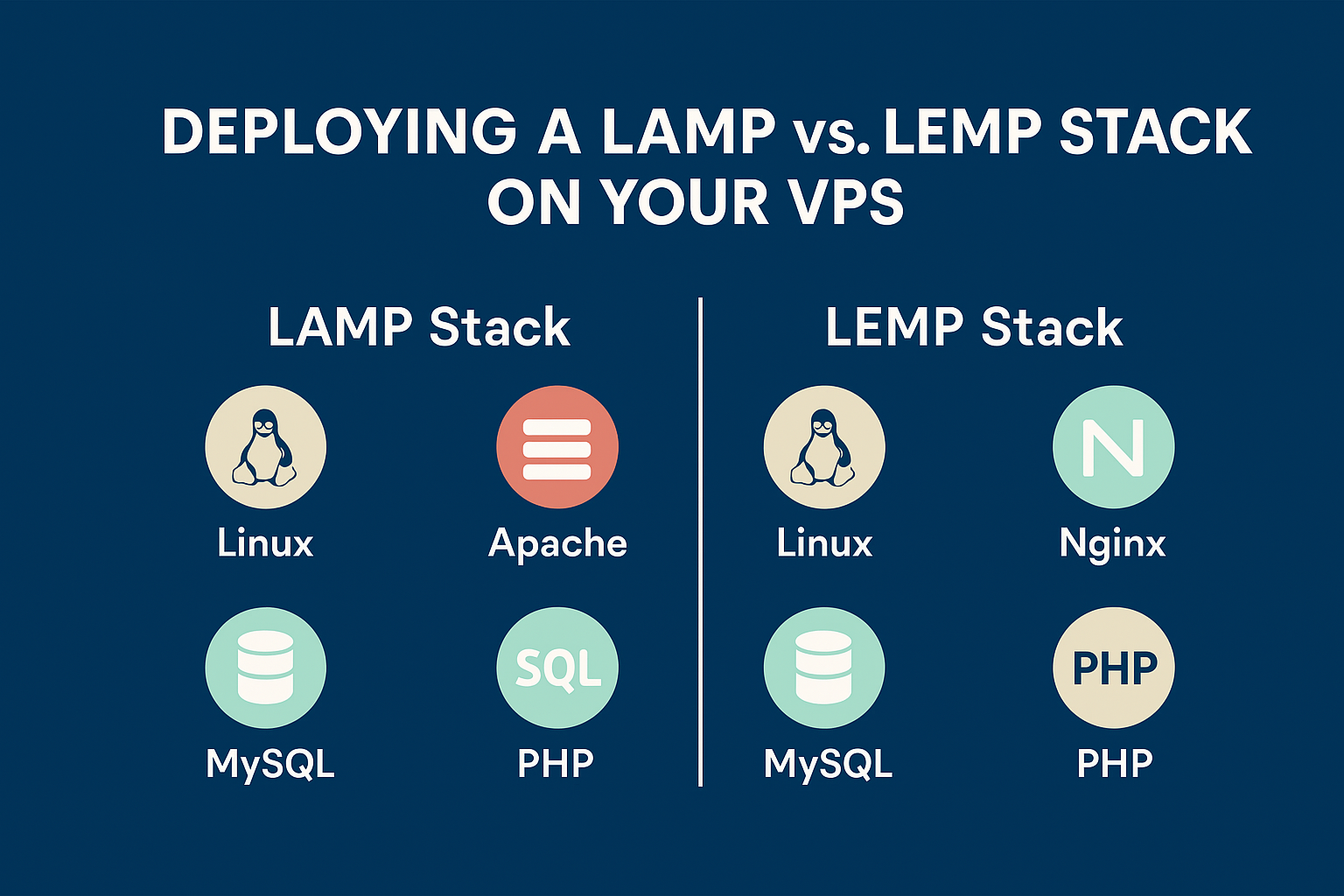Running your own Virtual Private Server (VPS) gives you flexibility and control, but it also means you’re responsible for keeping it fast and reliable. In this post, we’ll cover simple, practical steps and tools you can use to squeeze every bit of performance out of your VPS.
1. Assess Your Current Performance
Before making changes, you need a clear picture of where bottlenecks are. Use tools like:
- top or htop for real-time CPU and memory usage.
- sysbench for benchmarking CPU, memory, and I/O performance.
- iostat and vmstat for disk and virtual memory statistics.
- Nagios or Prometheus for ongoing health checks and alerts. citeturn0search15
Running these assessments helps you pinpoint whether your CPU, RAM, disk, or network is holding you back.
2. Choose the Right Software Stack
Not all web servers are created equal. Consider:
- Nginx or LiteSpeed for handling many simultaneous connections with low memory usage.
- Apache with mod_event if you need its rich module ecosystem.
- MySQL vs MariaDB, and tune them with tools like mysqltuner or MySQL Performance Schema.
Tweaking worker processes, buffer sizes, and connection limits in your server’s config can yield noticeable gains. citeturn0search4
3. Implement Caching Everywhere
Caching reduces repeated work and speeds up responses:
- Varnish for HTTP-level caching in front of your web server.
- Redis or Memcached for object caching and session storage.
- OPcache for PHP bytecode caching.
By storing frequently used data in memory, you cut database queries and page-rendering time. citeturn0search4
4. Use a Content Delivery Network (CDN)
A CDN distributes your static files—images, CSS, JavaScript—across global edge servers. Users download assets from the nearest location, reducing latency and offloading bandwidth from your VPS. Popular options include Cloudflare, Fastly, and Amazon CloudFront. citeturn0search4
5. Optimize Storage and Disk I/O
Disk speed often limits performance. To improve I/O:
- Choose SSD storage over HDD for faster reads and writes.
- Use XFS or EXT4 with tuned mount options (
noatime,nodiratime). - Consider RAID 1 or RAID 10 if your provider allows it, for redundancy and read performance.
These tweaks can cut down file access times and database latency.
6. Tune Kernel and Network Settings
Your Linux kernel has parameters you can adjust via sysctl:
# Increase file handles
fs.file-max = 100000
# Improve TCP performance\ nnet.core.somaxconn = 1024
net.ipv4.tcp_tw_reuse = 1
net.ipv4.tcp_fin_timeout = 15Experiment carefully—small changes can have big effects on stability.
7. Monitor with the Right Tools
Continuous monitoring lets you catch issues before they impact users. Top choices include:
- Datadog or New Relic for comprehensive, paid SaaS monitoring.
- Prometheus + Grafana for open-source metrics collection and dashboards.
- Zabbix or Icinga for traditional server and network monitoring. citeturn0search5
Set up alerts on CPU spikes, memory leaks, and disk usage thresholds.
8. Automate Routine Maintenance
Use cron jobs or tools like Ansible to:
- Apply security updates and package upgrades.
- Rotate and archive logs.
- Backup databases and critical files.
Automation reduces manual effort and ensures your server stays healthy over time.
9. Secure Without Sacrificing Speed
Security tools can be resource-intensive. Balance protection and performance by:
- Running fail2ban with a whitelist of trusted IPs.
- Using iptables or ufw with optimized rulesets.
- Offloading SSL termination to a reverse proxy or load balancer.
This way, you keep attackers out without bogging down your VPS.
Conclusion
Optimizing your VPS is an ongoing process of measuring, tweaking, and monitoring. Start with assessments, then layer in software tuning, caching, and monitoring. Automate maintenance and keep security tight. With these tips and tools, your VPS will deliver fast, reliable performance for any workload.



